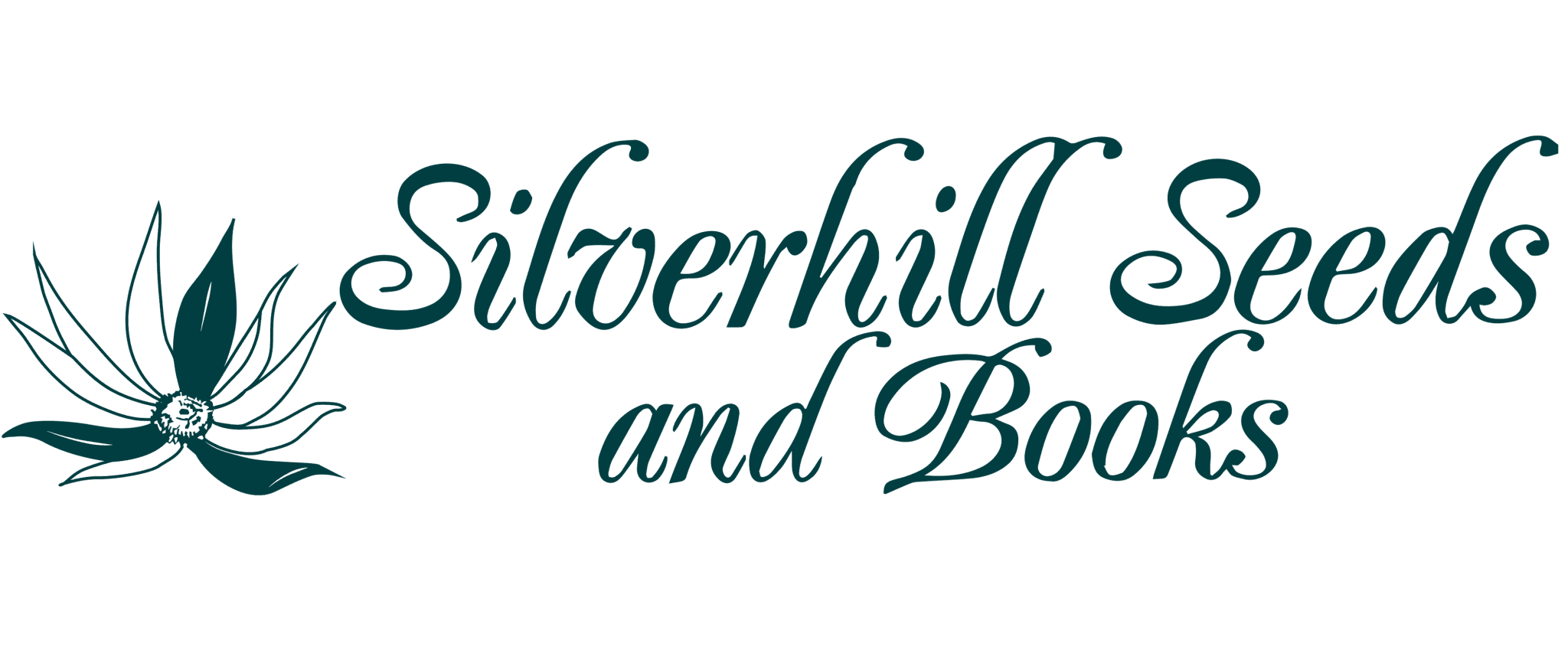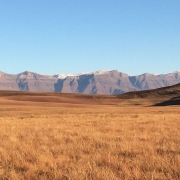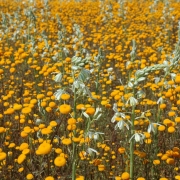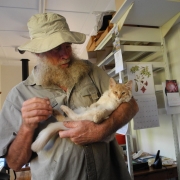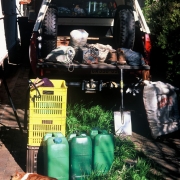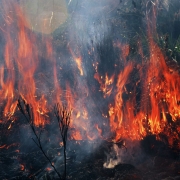From the Archives: Newsletter July 2002
July 2002
Dear plants person,
The catalogue and newsletter are a little late this year – we decided to take a break in late June, and go walking in the Spanish Pyrenees with Rachel’s sister and brother-in-law. For 3 weeks we didn’t mention seeds, plants or books and we enjoyed someone else’s flora for a change. The Rhododendrons were flowering high in the mountains, as were various Liliums, and they were magnificent. We also saw Gentians growing wild for the first time among the last patches of snow. The beech and oak forests on the lower mountain slopes were beautiful as well as being cool and damp – a lovely contrast to the hot sun outside. However, it is now back to the grindstone!
Earlier in the year we decided to put down a borehole to increase our water supply on the property at Brackenfell. We obtained the services of a geophysicist who surveyed the property and indicated a site where we could expect to find water. While he was walking round the property, we asked him innocently about some strange white material that we had seen occasionally emerging from the sand. The bombshell that he dropped is still with us now – he told us that the compound was asbestos waste! We subsequently discovered that in the 1970s before we owned the property, someone had dumped 5 000 m3 of asbestos processing waste on the property to fill sand mining pits and to level the ground. The asbestos had been covered with a layer of sand and only when we dug in the area or when moles dug through it, did it become visible. Obviously this is a huge health hazard and is highly illegal. We have spent the last 6 months with lawyers, Government officials, etc assessing liability, who to blame, and what we can do to rectify the matter. The outcome is that “the buck stops with us” and it is our problem! Proving who did what is a difficult task at the best of times, and when one is working 30 years after the event, it becomes almost impossible. Providing that the material is covered or is wet, the asbestos fibres are not a danger. Due to the prohibitive expense of trying to remove all the waste, we will probably have to cover the area with sand, demarcate it in some way, and write a clause into the title deeds of the property preventing anyone from developing that area (about 1 hectare) in the future. This whole episode made us realise the inadequacies in the enforcement of environmental law in South Africa, and it also occupied a lot of time and shot our stress levels sky high!
Oh, you may wonder about the borehole! On drilling the hole (luckily missing the asbestos!) we struck water at 75 meters and the hole delivers more than 10 000 liters per hour! So there was some good news from the whole fiasco.
The bad news, apart from the asbestos, is that we did not have much time this year for travelling, and our collecting was severely curtailed. Hopefully this will be rectified in the second half of the year.
While we were stuck at home consulting with lawyers, etc., we concentrated on extending our book list, and have been obtaining quite a number of older out of print books. You will see from the enclosed list that there are many more titles than previously. We now visit all the second hand book shops that we pass on our seed collecting trips, to see what we can find.
Frontier Laboratory is doing well and it gives us all a great deal of pleasure. Andy has just erected a growing tunnel that is the talk of the neighbourhood as, at night when the lights come on, you can see it from miles away. It has been equipped with rolling tables and heating as well as cooling. The plants are responding well to their new environment and we are getting more growth out of them than ever before. At night during the winter, the temperature at Brackenfell frequently drops to about 2°C, and now we can keep the temperature in the tunnel above 8°C, which obviously makes a difference to growth.
Our sowing of annual seeds was delayed this season when we found that half the trial beds we had made were on top of the asbestos! We had to prepare new beds, sterilise the soil and get the seeds sown in a rush, resulting in uneven germination. Some of the seeds were simply sown too late (normally we sow in March or April when the high summer temperatures have decreased) and they have not germinated well. Others have germinated but are still tiny. We will wait and see what happens in the spring.
As we write this, the rain is pouring down, though whether this cold front is reaching Namaqualand we are not sure. The Cape Peninsula has had good rain so far this winter, and some of the fronts have reached the Karoo and Namaqualand, so there should be good floral displays.
The summer rainfall areas of South Africa had bad rain this summer, and they are very dry. They had plenty of rain before Christmas, and then it dried up completely and virtually none fell for the rest of the season. This means that the winter fires have been particularly bad this year, and the vegetation is suffering. We are told it is due to El Nino again.
Finally, we cannot please everybody! Someone in the USA published an article about Silverhill Seeds on a gardening website on the Internet, describing us as “a pair of aged colonials travelling through Africa plundering and pillaging the veld as we go, and depriving the local inhabitants of a livelihood”!! We suppose that “aged colonials” is a trifle more flattering that “imperialists” or “capitalist pigs”, but it provided us with a wonderful mental picture!
On that note we wish you well with your seed sowing and with your plant collections.
Best wishes
